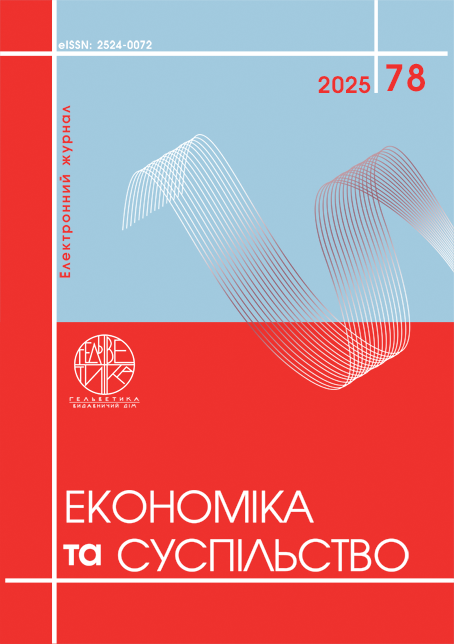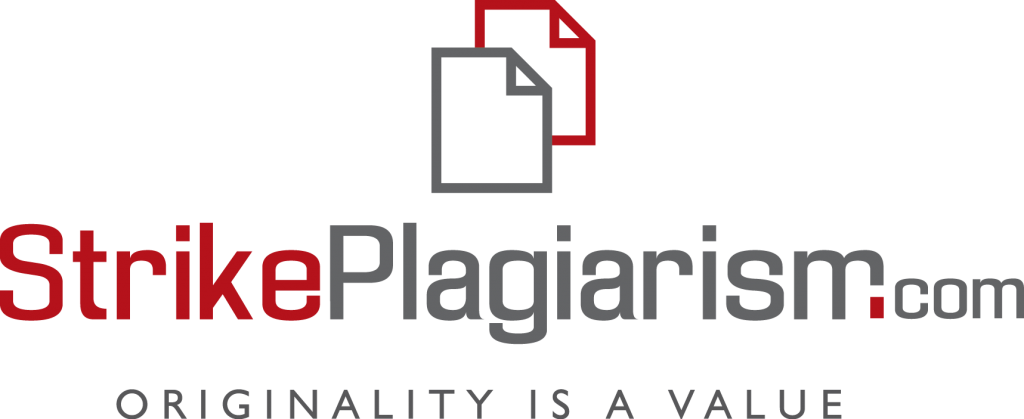STEEP+S ANALYSIS AS AN INSTRUMENT FOR HIGHER EDUCATION INSTITUTIONS' STAKEHOLDER INTERACTION MARKETING IN THE DIGITALIZATION ERA
Abstract
The article focuses on developing a theoretical and methodological approach to analyzing the external environment's impact on higher education institutions under digitalization conditions. Contemporary universities operate in an extremely turbulent environment characterized by demographic shifts, rapid digitalization, economic instability, climate challenges, political transformations, and security threats. In Ukraine, these challenges are particularly acute due to war, mass migration of students and faculty, and destruction of educational infrastructure. Traditional linear-functional management models lose effectiveness as they fail to ensure flexible responses to dynamic external environment changes. The purpose of the research is to develop a theoretical and methodological approach for determining external environment influence on higher education institutions based on STEEP+S analysis tools to enhance the effectiveness of stakeholder interaction marketing under digitalization conditions. The research methodology combines systematic analysis, comparative method, generalization, and synthesis approaches. The STEEP+S analysis method was applied, examining six key dimensions: Social (demographic trends, migration processes), Technological (digitalization, artificial intelligence, EdTech solutions), Economic (financial challenges, new funding models), Ecological (climate change, sustainable development, green technologies), Political (educational policy, international integration), and Security (cyber security, information security, psychological safety). The study reveals that STEEP+S analysis allows universities to systematically assess external environment challenges and develop adequate marketing strategies for stakeholder interaction. Each dimension presents both risks and opportunities that require strategic response through multi-stakeholder collaboration. The research demonstrates that social dimension challenges, including demographic crisis and student migration, can be transformed into development resources through social innovations and lifelong learning programs. The technological dimension actualizes the need for digital ecosystems and artificial intelligence centers. The economic dimension necessitates funding source diversification through corporate partnerships. The ecological dimension opens opportunities for green technology development and sustainability programs. The political dimension is linked to European educational space integration and international programs, while the security dimension requires cybersecurity competencies and psychological resilience development. The practical value lies in providing higher education institutions with a comprehensive analytical tool for strategic planning, developing stakeholder interaction marketing strategies, and adapting to digitalization challenges. The proposed STEEP+S analysis enables systematic organization of both risks and opportunities in higher education institution development and their stakeholder interactions, which is particularly relevant under conditions of war, demographic crisis, and global competition for talents.
References
Волковська Н. Управління інформаційними технологіями в навчальних закладах. Міждисциплінарні експертизи для відновлення і розвитку України: міжнародна науково-практична конференція, м. Київ, 5 червня 2025 р.: зб. матеріалів. Київ : НаУКМА, 2025. С. 150-152.
Журавська О., Житнік Ю., Нагорняк Т. Стратегічне управління розвитком закладу освіти в умовах війни. Міждисциплінарні експертизи для відновлення і розвитку України. Київ : НаУКМА, 2025. С. 156-162.
Berbyuk-Lindström, N., Asatiani, A., & Kononova, N. Exploitation and Exploration of Digital Technologies in Times of War: Experiences of Ukrainian Higher Education Institutions. Proceedings of the 32nd European Conference on Information Systems (ECIS), Paphos, Cyprus. 2024. URL: https://aisel.aisnet.org/ecis2024/track20_adoption/track20_adoption/10/
Brynjolfsson E., McAfee A. The Second Machine Age: Work, Progress, and Prosperity in a Time of Brilliant Technologies. New York: W. W. Norton & Company, 2014. 336 p.
Bryson J. M., Crosby B. C., Bloomberg L. Public value governance: Moving beyond traditional public administration and the New Public Management. Public Administration Review. 2014. Vol. 74, No. 4. P. 445-456.
Castells M. The Rise of the Network Society. 2nd ed. Malden: Wiley-Blackwell, 2010. 656 p.
Drucker P. The Practice of Management. Abingdon-on-Thames: Routledge, 2012. 352 p.
Duchek S. Organizational resilience: a capability-based conceptualization. Business Research. 2020. Vol. 13, No. 1. P. 215-246.
European Demographic Data Sheet 2024 / Wittgenstein Centre for Demography and Global Human Capital, Vienna Institute of Demography, IIASA. Vienna, 2024. 16 p.
Freeman R. E. Strategic Management: A Stakeholder Approach. Boston: Pitman, 1984. 292 p.
Håkansson L., Ford D. How should companies interact in business networks? Journal of Business Research. 2002. Vol. 55, No. 2. P. 133-139.
Hinssen, P. The Network Always Wins: How to Influence Customers, Stay Relevant, and Transform Your Organization to Move Faster than the Market. New York : McGraw-Hill Education, 2015. 256 p.
Kotler P., Kartajaya H., Setiawan I. Marketing 5.0: Technology for Humanity. Hoboken: Wiley, 2021. 256 p.
Mulgan G. The process of social innovation. Innovations: Technology, Governance, Globalization. 2006. Vol. 1, No. 2. P. 145-162.
OECD. Education at a Glance 2023: OECD Indicators. Paris: OECD Publishing, 2023. 516 p.
Porter M. E., Kramer M. R. Creating shared value. Harvard Business Review. 2011. Vol. 89, No. 1-2. P. 62-77.
Robertson, S. L., Beech, J. Promises promises: international organisations, promissory legitimacy and the re-negotiation of education futures. Comparative Education. 2024. Vol. 60, Issue 3. P. 423–440. DOI: https://doi.org/10.1080/03050068.2023.2287938
Schwab K. The Fourth Industrial Revolution. New York: Crown Business, 2016. 192 p.
Senge, P. M. The Fifth Discipline: The Art & Practice of the Learning Organization. New York : Doubleday-Currency, 1990. 464 с.
UNESCO. Education in a post-crisis world: building resilience and equity. Paris: UNESCO, 2023. 285 p.
Vial G. Understanding digital transformation: A review and a research agenda. Journal of Strategic Information Systems. 2019. Vol. 28, No. 2. P. 118-144.
Weber M. The Theory of Social and Economic Organization. New York: Simon and Schuster, 2009. 436 p.
Yliniiva K., Bryan A., Brunila K. ‘The future we want’? – the ideal twenty-first century learner and education’s neuro-affective turn. Comparative Education. 2024. Vol. 60, Issue 3. P. 498–518. DOI: https://doi.org/10.1080/03050068.2024.2363096
Volkovska, N. (2025). Information technology management in educational institutions. In Interdisciplinary expertise for recovery and development of Ukraine (pp. 150-152). Kyiv: NaUKMA.
Zhuravska, O., Zhytnik, Y., & Nahornyak, T. (2025). Strategic management of educational institution development during wartime. In Interdisciplinary expertise for recovery and development of Ukraine (pp. 156-162). Kyiv: NaUKMA.
Berbyuk-Lindström, N., Asatiani, A., & Kononova, N. (2024) Exploitation and Exploration of Digital Technologies in Times of War: Experiences of Ukrainian Higher Education Institutions. Proceedings of the 32nd European Conference on Information Systems (ECIS), Paphos, Cyprus. https://aisel.aisnet.org/ecis2024/track20_adoption/track20_adoption/10/
Brynjolfsson, E., & McAfee, A. (2014). The Second Machine Age: Work, Progress, and Prosperity in a Time of Brilliant Technologies. New York: W. W. Norton & Company.
Bryson, J. M., Crosby, B. C., & Bloomberg, L. (2014). Public value governance: Moving beyond traditional public administration and the New Public Management. Public Administration Review, 74(4), 445-456.
Castells, M. (2010). The Rise of the Network Society (2nd ed.). Malden: Wiley-Blackwell.
Drucker, P. (2012). The Practice of Management. Abingdon-on-Thames: Routledge.
Duchek, S. (2020). Organizational resilience: a capability-based conceptualization. Business Research, 13(1), 215-246.
European Demographic Data Sheet 2024 (2024). Wittgenstein Centre for Demography and Global Human Capital, Vienna Institute of Demography, IIASA. Vienna.
Freeman, R. E. (1984). Strategic Management: A Stakeholder Approach. Boston: Pitman.
Håkansson, L., & Ford, D. (2002). How should companies interact in business networks? Journal of Business Research, 55(2), 133-139.
Hinssen, P. (2015). The network always wins: How to influence customers, stay relevant, and transform your organization to move faster than the market. New York: McGraw-Hill Education.
Kotler, P., Kartajaya, H., & Setiawan, I. (2021). Marketing 5.0: Technology for Humanity. Hoboken: Wiley.
Mulgan, G. (2006). The process of social innovation. Innovations: Technology, Governance, Globalization, 1(2), 145-162.
OECD (2023). Education at a Glance 2023: OECD Indicators. Paris: OECD Publishing.
Porter, M. E., & Kramer, M. R. (2011). Creating shared value. Harvard Business Review, 89(1-2), 62-77.
Robertson, S. L., & Beech, J. (2024). Promises promises: International organisations, promissory legitimacy and the re-negotiation of education futures. Comparative Education, 60(3), 423–440. DOI: https://doi.org/10.1080/03050068.2023.2287938
Schwab, K. (2016). The Fourth Industrial Revolution. New York: Crown Business.
Senge, P. M. (1990). The Fifth Discipline: The Art & Practice of the Learning Organization. New York: Doubleday / Doubleday-Currency
UNESCO (2023). Education in a post-crisis world: building resilience and equity. Paris: UNESCO.
Vial, G. (2019). Understanding digital transformation: A review and a research agenda. Journal of Strategic Information Systems, 28(2), 118-144.
Weber, M. (2009). The Theory of Social and Economic Organization. New York: Simon and Schuster.
Yliniiva, K., Bryan, A., & Brunila, K. (2024). ‘The future we want’? – The ideal twenty-first century learner and education’s neuro-affective turn. Comparative Education, 60 (3), 498–518. DOI: https://doi.org/10.1080/03050068.2024.2363096
Copyright (c) 2025 Наталія Кононова, Марина Ус

This work is licensed under a Creative Commons Attribution 4.0 International License.


